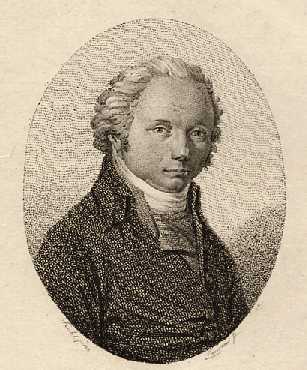Franz Joseph Gall
A controversial figure even in his own lifetime, Viennese physician Franz Joseph Gall (1758-1828) may properly be considered the father of phrenology, although Gall himself never used that term, and phrenology as we think of it was far removed from Gall's work on the brain and nervous system. As early as the 1790s, Gall was developing theories on the anatomy and function of the parts of the brain. In 1805, with a student and follower, J. G. Spurzheim, Gall embarked on a long lecture tour of Europe, visiting prisons and asylums as well. After settling in Paris in 1807, he began his major work on cerebral function. In 1810 the first volume of Anatomie et Physiologie du Système Nerveux appeared—one of the first and still impressive accounts of the structure and dissection of the human brain. It and the successive volume were written in conjunction with his assistant, Johann Gaspar Spurzheim.
Franz Joseph Gall came to believe that the anatomy and structure of the brain influenced and, indeed, molded the shape of the skull and, conversely, a study of the skull could reveal information about the size and structure of the brain. Based on his studies in cerebral anatomy, he then went on to isolate twenty-seven innate human faculties, corresponding to areas or "organs" of the brain, and maintained that the size and development of the cerebral area would imply a greater or lesser disposition of each trait or faculty, and direct examination of the skull could provide information about the nature of the faculty in the brain below. Gall then associated each cerebral faculty with its relative position on the surface of the skull. These faculties included the love of one's children, covetousness, pride, sense of place, poetic talent, and firmness of purpose. (Gall did, in fact, place two faculties—memory of words and center of language—in their correct areas of the brain, although the others remain unverified.) Plaster casts of heads and skulls were used to support his ideas, and studies of living beings with pronounced faculties could be used as the basis for comparison. This study became the cornerstone of phrenological character examination.

